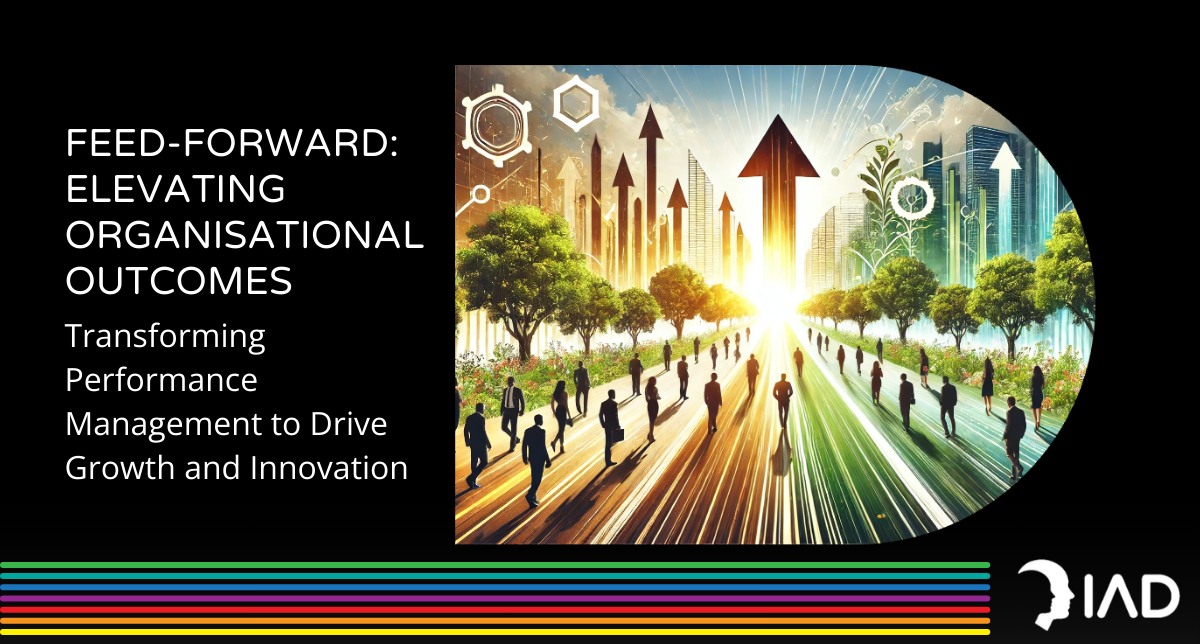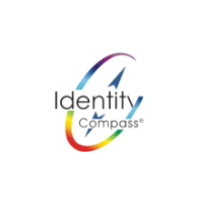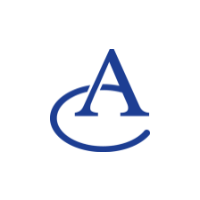Feed-forward: Elevating Organisational Outcomes
Transforming Performance Management to Drive Growth and Innovation

Feedback, while useful, is increasingly falling short of driving real organisational performance in today's fast-paced business environment. It's a tool that's long been ingrained in performance reviews, primarily focusing on reflecting past behaviours and outcomes. But as businesses expand and markets evolve rapidly, this rearview approach can stifle growth, agility, and innovation. Why? Because feedback is inherently retrospective—it tells us what went wrong, what didn’t work, and where mistakes were made.
While useful for highlighting areas of improvement, the backward-looking nature of feedback often reinforces limitations. It locks people into a mentality where past performance defines their potential. This can restrict creativity, lower employee morale, and inhibit the kind of bold, innovative thinking that ambitious businesses desperately need. The fact is, feedback alone doesn’t provide the forward momentum required to help teams and individuals adapt to change or embrace new opportunities.
In contrast, what businesses need is a proactive approach—one that doesn't just dwell on past outcomes but instead focuses on shaping future success. This is where the concept of feed-forward comes in. It’s an approach that shifts the conversation away from critiquing past performance and toward envisioning future growth, continuous learning, and potential.
Feed-forward represents a pivotal shift in leadership thinking and performance management—one that HR leaders must consider if they are to cultivate a resilient, agile, and growth-oriented organisational culture. So, why continue looking in the rearview mirror when the road ahead holds the keys to growth?
A Future-Focused Approach to Growth
Feed-forward is more than just an alternative to traditional feedback—it's a game-changer in how organisations can drive growth and innovation. Unlike feedback, which is grounded in the past, feed-forward is entirely forward-looking. It doesn’t focus on what went wrong or where improvements are needed; instead, it directs attention toward future possibilities, untapped potential, and actionable strategies for development.
The key difference lies in the attitude each approach fosters. Feedback, by its very nature, often limits discussions to past actions and outcomes, reinforcing a sense of finality. In contrast, feed-forward encourages continuous learning by focusing on what can be done moving forward. It asks: What could we improve next time? What actions could lead to better results? How can we unlock potential that hasn’t yet been realised?
For HR leaders in ambitious, growing organisations, this approach is critical. Feed-forward opens up a space where employees feel empowered to take risks and innovate without the fear of past mistakes hanging over them. Instead of viewing performance management as a way to correct past failures, it becomes a tool for building future capabilities.
When rapid change is the norm, adaptability is key to success. Feed-forward offers a performance management framework that keeps pace with this need for agility. It encourages leaders and teams alike to focus on long-term development rather than short-term fixes. And in doing so, it helps to create a culture of continuous improvement—one where people are motivated not just by avoiding mistakes but by actively pursuing growth.
If feedback serves to review what’s been done, how much more could your organisation achieve by focusing on what comes next?
A Game Changer
Adopting a feed-forward approach isn't just a shift in performance management—it's a strategic evolution that transforms the entire culture. Feed-forward creates a development-oriented environment where future potential, rather than past shortcomings, is the focal point. This mentality shift is pivotal for cultivating a resilient and innovative organisational culture.
So, what specific advantages does feed-forward offer?
Improved Employee Engagement: Employees respond positively when the focus is on their future growth and possibilities. Instead of revisiting past mistakes, feed-forward promotes an atmosphere where individuals feel valued for their potential and empowered to explore new opportunities. This proactive focus boosts morale and engagement, encouraging employees to take ownership of their development and performance.
Increased Innovation: When teams are encouraged to look forward, they become more open to experimentation. With the feed-forward approach, employees aren’t constrained by the fear of repeating past errors; instead, they are motivated to test new ideas and embrace innovative solutions. This forward-focused thinking not only benefits individual team members but also drives collective creativity, helping the organisation stay competitive in a rapidly evolving market.
Enhanced Agility:
In fast-paced industries, organisations must adapt quickly to changing conditions. Traditional feedback can slow this process, as it often requires reviewing and critiquing what has already happened. Feed-forward, however, keeps the focus on developing the skills and strategies needed for future challenges. By prioritising future actions and continuous improvement, organisations become more agile and better prepared to pivot when necessary.
Ultimately, feed-forward helps to build a culture where proactivity and anticipation replace reactivity and critique. This shift isn’t just about enhancing individual performance but about creating a collective momentum that drives the entire organisation forward.
Are you ready to harness the power of feed-forward to create a culture where your people and organisation thrive on anticipation, creativity, and continuous development?
The Leadership Thinking Style Shift
To truly implement feed-forward, HR leaders must champion a significant shift in leadership thinking. Adopting feed-forward requires moving beyond traditional, retrospective thinking and embracing a proactive, future-focused approach. This transformation hinges on specific Cognitive Intentions—mental strategies that shape how leaders process information, make decisions, and guide their teams. The Dynamic Intelligence Development System™ (DIDS™) offers a framework for these shifts, fostering the development of more adaptable and forward-looking Thinking Styles.
From Concrete to Abstract Thinking: Leaders need to expand their focus from fixed, concrete details of past events to a more abstract, visionary perspective. Abstract thinking enables leaders to envision multiple future scenarios, empowering them to create strategies that align with long-term objectives rather than just reacting to what has already occurred. This shift is essential for navigating the complexity and ambiguity that ambitious organisations face in dynamic markets.
From Reactivity to Proactivity: Traditional feedback mechanisms often reinforce reactive behaviour—responding to past outcomes. In contrast, feed-forward and DIDS™ encourage leaders to adopt a proactive stance. This means anticipating challenges, spotting opportunities before they arise, and engaging teams in future-focused conversations that inspire preemptive action. Leaders who cultivate this proactive attitude become architects of organisational growth rather than mere managers of past events.
From Deficit Thinking to Growth Thinking: A crucial and multi-faceted Cognitive Intention shift involves moving from a deficit-based focus—spotlighting past mistakes and failures—to a growth-oriented approach. Leaders must prioritise identifying and developing future capabilities within their teams, focusing on what can be achieved rather than what went wrong. This not only fosters a more positive and productive organisational culture but also encourages innovation, as employees feel safer to explore new ideas without fear of judgment.
DIDS™ plays an integral role in creating this Choice of Cognitive Intentions. It provides HR leaders with the tools to guide their leadership teams in actively reconstructing their thinking patterns, enhancing their capacity to choose more effective, future-focused responses. By becoming more aware of their habitual Cognitive Intentions and developing the flexibility to shift between them, leaders can create an environment where feed-forward becomes the natural approach to performance management.
How can you ensure your leadership teams are equipped with the right Thinking Styles to foster a culture of innovation, agility, and growth?
Shaping Future-Oriented Leaders
To shift an organisation’s performance management from feedback to feed-forward, HR leaders must not only reshape Thinking Styles but also provide a structured pathway for this transformation. This is where the Dynamic Intelligence Development System™ (DIDS™) becomes essential. DIDS™ offers a framework for developing the Cognitive Intentions necessary for leaders to construct and maintain a forward-looking approach in both their thinking and behaviour.
Dynamic Awareness: At its core, DIDS™ helps leaders develop an acute Awareness of their Cognitive Intentions—those habitual thought patterns that influence their decision-making. By becoming aware of these patterns, leaders gain the ability to choose more adaptive responses in the moment, moving away from the tendency to focus on past performance and instead prioritising future growth. This awareness enables leaders to consciously engage in feed-forward thinking, which is instrumental for cultivating a proactive and innovative organisational culture.
Active Construction: DIDS™ facilitates the active construction of new Thinking Styles by helping leaders deliberately choose their Cognitive Intentions. Through this process, they can reconstruct their habitual thinking patterns, allowing them to prioritise growth-oriented and anticipatory approaches. By integrating feed-forward into their leadership style, they not only improve their own adaptability but also influence their teams to adopt a similar forward-focused mentality. This Choice empowers leaders to become agents of change, fostering an environment where future potential is continuously explored and developed.
Thinking Complexity: DIDS™ enhances leaders’ overall thinking complexity, enabling them to navigate the increasingly intricate and unpredictable challenges of growing organisations. By developing more sophisticated cognitive patterns, leaders gain the ability to balance immediate needs with long-term strategies. This level of cognitive agility is critical for implementing feed-forward practices effectively, as it ensures leaders can manage complexity without defaulting to past-oriented critiques.
Practical Application: DIDS™ isn’t just a theoretical framework; it’s a practical tool for HR leaders to integrate into leadership development programs. By using DIDS™, HR leaders can guide their teams through Cognitive Intention rebalancing exercises, focusing on how to build future-facing strategies. For example, an HR leader could implement workshops that teach leaders to consciously switch from concrete, reactive thinking to abstract, proactive approaches. This active, structured practice reinforces the mentality needed to make feed-forward a sustainable and impactful part of the organisational culture.
How can you leverage the power of DIDS™ to shape your leadership teams into champions of future-focused development?
Feed-Forward in Action
SodaStream’s Strength-Based Performance Appraisal (SBPA) 1
SodaStream, an international leader in the home carbonation industry, faced common challenges with its traditional performance appraisal system. Employees and managers expressed dissatisfaction, describing the feedback process as demotivating and counterproductive. In response, the HR team collaborated with experts to implement a Strength-Based Performance Appraisal (SBPA) system that integrated feed-forward interviews .
SodaStream, an international leader in the home carbonation industry, faced common challenges with its traditional performance appraisal system. Employees and managers expressed dissatisfaction, describing the feedback process as demotivating and counterproductive. In response, the HR team collaborated with experts to implement a Strength-Based Performance Appraisal (SBPA) system that integrated feed-forward interviews .
The SBPA at SodaStream emphasised identifying and leveraging employees’ strengths. Through feed-forward interviews, managers asked employees to recount “full of life” experiences at work—moments where they felt most engaged and effective. This approach shifted the focus from critiquing past mistakes to exploring future growth opportunities. The results were profound: not only did employee engagement rise, but the company also documented measurable improvements in innovation and cross-functional collaboration. By focusing on creating win-win solutions that aligned individual strengths with business goals, SodaStream fostered a culture of continuous improvement and positivity. This shift, facilitated through feed-forward, not only improved individual performance but also enhanced organisational agility and morale .
A Canadian Business Equipment Firm’s Feed-Forward Field Test 2
In another example, a Canadian business equipment firm tested the feed-forward interview (FFI) against traditional performance appraisal methods. Managers and their employees were divided into two groups: one received traditional feedback-based appraisals, while the other engaged in feed-forward sessions . The feed-forward group participated in structured interviews focusing on identifying successful past performance moments and discussing strategies to recreate similar conditions for future success.
Four months after the intervention, the results were compelling. Employees in the feed-forward group demonstrated significantly higher job performance compared to their counterparts who received traditional feedback. The study highlighted that feed-forward not only led to immediate performance improvements but also fostered enduring changes in employee behaviour. The approach encouraged a proactive and solutions-oriented mentality, reducing defensiveness and increasing engagement. Managers reported that feed-forward conversations were more constructive and led to a more collaborative relationship with their teams .
Lessons Learned
These case studies illustrate that when organisations move beyond retrospective critique and invest in future-focused development, the benefits extend beyond individual performance improvements. By adopting feed-forward, both SodaStream and the Canadian firm not only saw enhanced employee engagement and innovation but also cultivated a culture where continuous learning and agility became core organisational strengths.
How could you replicate these successes in your organisation, using feed-forward to not only transform individual performance but also drive collective growth and innovation?
In a rapidly evolving business landscape, the limitations of traditional feedback have become increasingly apparent. As organisations strive to remain competitive and innovative, the need for a more future-focused approach to performance management is essential. Feed-forward offers this alternative, transforming the focus from past mistakes to future opportunities. By embracing this approach, HR leaders can pave the way for a culture of growth, agility, and innovation—vital elements for thriving in today’s complex environment.
But for feed-forward to succeed, a shift in leadership thinking is crucial. Leaders must develop the Cognitive Intentions necessary for guiding their teams toward future-focused strategies. This shift involves moving away from deficit-based thinking, embracing abstract and proactive approaches, and ultimately adopting a growth-oriented perspective. The Dynamic Intelligence Development System™ (DIDS™) provides the structure and tools to make this transformation a reality, supporting leaders in developing the complexity and flexibility needed for feed-forward to thrive.
The potential outcomes of this shift are significant. Organisations that integrate feed-forward not only see improvements in individual performance but also gain a collective boost in innovation, employee engagement, and overall agility. These organisations become environments where people are encouraged to experiment, learn, and grow continuously.
The call to action is clear: Evaluate your current performance management systems. Are they unlocking future potential or trapping your teams in past mistakes? By shifting to feed-forward and investing in leadership development through DIDS™, you can transform your organisation into a dynamic, future-focused powerhouse.
If you would like to discuss how we can help you to elevate your organisational outcomes through feed-forward, please get in touch.
Alternatively, you can read more about the IAD's approach to developing leadership
1 Bouskila-Yam, O., & Kluger, A. (2011). Strength-based performance appraisal and goal setting.
2 Budworth, M.-H., Latham, G., & Manroop, L. (2014). Looking Forward to Performance Improvement: A Field Test of the Feedforward Interview for Performance Management.
All Rights Reserved | Adult Development (UK) Ltd




